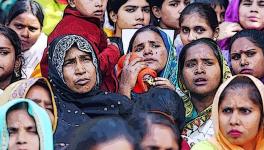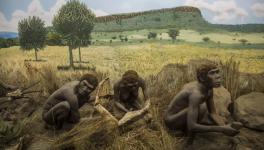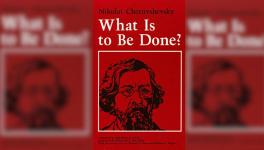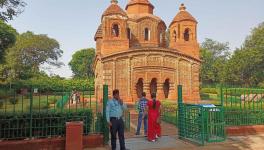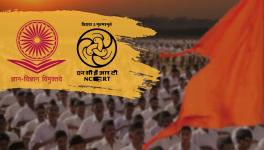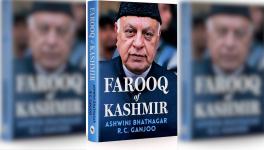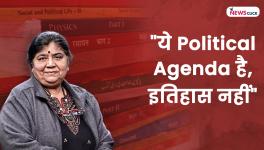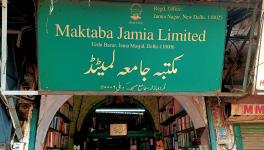Communalism, Hindutva and Kakori: A Reading List
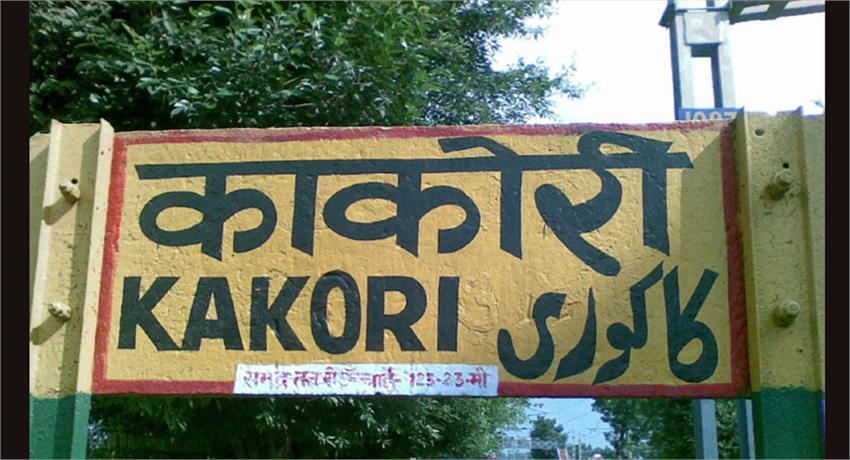
On 9 August 1925, a group of Indian Revolutionaries affiliated with the Hindustan Republican Association looted a train carrying British government at Kakori in Uttar Pradesh. The daredevils were Ramprasad Bismil, Rajendra Lahiri, Ahsfaqullah Khan, Roshan Singh and others. The Kakori Incident, newspapers of the time noted, had “shaken the foundations of the British Empire”. The police charged three revolutionaries under section 121-A (sedition) and another 15 were sentenced to five to ten years in prison.
The Kakori Action had a significant impact on the Indian revolutionary movement. Chandrashekhar Azad, Bhagat Singh, Sukhdev and others transformed their Hindustan Republican Association or HRA into HSRA, adopting socialism as the official ideology of the party and the attitude towards religion shifted from its acceptance to outright critique.
The HRA had been formed against the backdrop of the abrupt withdrawal of Gandhi’s non-cooperation movement, which left Indians disillusioned, the Bolshevik Revolution and the intense Hindu-Muslim riots of the first half of the third decade of the 20th century. Bismil, a prominent HRA leader was raised an Arya Samajist with deep-seated reservations about the Muslim community. It took friendship with Ashfaqullah Khan, a Tablighi Muslim, to change his views. Both were martyred on the same day and both attributed Hindu-Muslims tensions to the machinations of the British and their Indian agents. Their last appeal was for communal harmony. This was the spirit of the Kakori revolutionaries: a united resistance against imperialism, capitalism and feudalism.
The Kakori incident took place in the same year as the RSS was formed in Nagpur by a group of Hindu communalist who had identified Muslims as their prime enemies and had allied with the British against the freedom struggle. The RSS and the Hindu Mahasabha not only stayed aloof from the anti-colonial struggle but participated with the British to suppress the movement which manifested, co-incidentally, on another 9 August—in 1942, when the Quit India Movement was launched.
As majoritarian and communal passions rise, the ideology and message of the Kakori martyrs and an understanding of the origin, nature and trajectory of communalism in India eludes a large section. Some books to help understand why communalism grew in India and how it was anathema to Indian revolutionaries. Brief extracts:
Construction of Communalism in Colonial North India, Gyandendra Pandey, Oxford University Press, 1990.
“The all-India ‘Hindu community’ (and, to a large extent, the all-India ‘Muslim Community’ too) was a colonial creation for social and economic changes brought by colonialism, Indian efforts to defend the indigenous religions and culture against western missionary attacks, the ‘unifying’ drive of the colonial state—which was marked at the level of administrative structure and attempted political control (‘Muslims’ must not be antagonised, ‘Hindu’ sensibilities must not be touched)—and the very history of movements like that of cow-protection, widely publicised as they were by the end of the nineteenth century, tended to promote the idea of an all-India “Hindu community” and an all-India “Muslim community” which were supposedly ranged against one another for much of the time.”
The Hindu Nationalist Movement in India, Christophe Jaffrelot, Columbia University Press, 1998.
“Hindu nationalism derives from socio-religious movements initiated by high caste Hindus…They [the movements] were reaction against the British colonial state and Christian missions. [Their] primary concern was to maintain the basic elements of the traditional social order and culture of the Hindus while adapting that tradition to take account of certain aspects of western society. This endeavour implied both the stigmatisation and the emulation of those who threatened Hindu society. At the same time, the tension between cultural preservation and modernisation was solved through the invention of a distant Golden Age which was both indigenous and in accord with modern values. The idea of the Golden Age was to become one of the cornerstones of Hindu nationalism…”
Hindu Nationalism Origins, Ideologies and Modern Myths, Chetan Bhatt, 2001, Berg.
“The Rashtriya Swayamsevak Sangh, the dominant Hindu nationalist organisation after the decline of the Hindu Mahasabha, was conspicuously absent from the national movement…both Hedgewar and Golwalkar (its second leader) actively opposed joining the anti-colonial movement in favour of ‘character building’ work in the service of the Hindu Nation. Similarly, the RSS, as a matter of explicit organisational policy, refused to join the non-cooperation movement and anti-colonial satyagrahas in the 1920s and 1940s, including the anti-Rowlatt agitations, the Civil Disobedience and Quit India movements, and the Naval mutiny in Bombay.”
The Production of Hindu-Muslim Violence in Contemporary India, Paul R Brass, Jackson School Publications, University of Washington Press, 2005.
Author’s note: “…in post-Independence India, what are labelled Hindu-Muslim riots have more often than not been turned into pogroms and massacres of Muslims, in which few Hindus are killed. In fact, in sites of endemic rioting, there exist what I have called ‘institutionalised riot systems,’ in which the organisations of militant Hindu nationalism are deeply implicated. Further, in these sites, persons can be identified, who play specific roles in the preparation, enactment, and explanation of riots after the fact. Especially important are what I call the ‘fire tenders,’ who keep Hindu-Muslim tensions alive through various inflammatory and inciting acts; ‘conversion specialists,’ who lead and address mobs of potential rioters and give a signal to indicate if and when violence should commence; criminals and the poorest elements in society, recruited and rewarded for enacting the violence; and politicians and the vernacular media who, during the violence, and in its aftermath, draw attention away from the perpetrators of the violence by attributing it to the actions of an inflamed mass public. When successful, as it most often is, the principal beneficiaries of this process of blame displacement are the government and its political leaders, under whose watch such violence occurs. Here also, in the aftermath, social scientists become involved when they draw attention to the difficulties of ‘governance’ in societies where interethnic and intercommunal animosities are allegedly rampant. They thus themselves become implicated in a political discourse that focuses on these alleged difficulties of governance rather than with the suffering of the victims of misgovernance, and thereby normalises the violence against its victims.”
Hindu Mahasabha in Colonial North India, 1915-1930: Constructing Nation and History, Prabhu Bapu, Routledge, 2012.
“In the wake of… Quit India Resolution on 8th August 1921, Savarkar instructed Hindu Sabhaites who happened to be ‘members of municipalities, local bodies, legislatures or those serving in the army…to stick to their posts’ across the country. The Mahasabha boycotted the Quit India Movement… there was little enthusiasm within the party for an anti-British confrontation… it tried to secure British favours by further moderation its position on India’s freedom and distancing itself from the nationalist struggle.”
Communalism in Modern India, Bipin Chandra, Har-Anand Publications, 1984.
“The middle class formed the main mass social base of communalism… throughout the twentieth century, in the absence of development of modern industries and modern social and cultural services, such as education, health services and because of shrinking of governmental expenditure, there existed extremely poor and worsening economic situation especially for the educated middle and lower middle classes who could not fall back on land and who found government jobs to be getting scarce and the professions overcrowded… which lead to increasing frustration…”
“The frustration, a sense of social deprivation and a constant fear of loss of identity and status often created and atmosphere of violence and brutality which when triggered off by a religious issue led to communal riots. The [middle class] identity and ego got tied up with the cow or peepal tree protection and music before a mosque, protection of such supposed right—a cow must not be sacrificed, a music procession before a mosque must become silent—was seen as a life-and-death question because it came to represent symbolically preservation or destruction of the [middle class] ego.”
Amar Shaheed Ashfaqullah Khan, Banarsidas Chaturvedi, Rajkamal Prakashan, 2008.
Excerpts from last letter of Ashfaqullah Khan:
“Oh! How can we appreciate the present-day life when our political leadership is going through internal strife? If one is fond of Tableegh [the propagation of Islam] the other believes that dying for Shuddhi only will lead to emancipation. Government secret service agents finance the spread of religious propaganda. Their aim is not to defend religion or help it to flourish but to create obstacles in the path of the moving train [of the freedom struggle].”
“Brothers! Your civil war, your internal bickering will not be useful for any of you… However, [if they continue fighting with each other] it is easy and very easy that all of them together will continue to be in chain… [Hindus and Muslims] should come together and live together or it will lead to the destruction of India…”
Collected Works of Ramprasad Bismil, Eds. Dinesh Shamra and Asha Joshi, Swarna Jyanti Delhi, 1997.
Excerpt from the last letter of Ramprasad Bismil:
“…the Muslim youth can also sacrifice their life for the country even more enthusiastically than Hindu youth and he had passed all the tests. Now no one shall dare say that Muslims should not be trusted…Now my only request to countrymen is that if they had even an iota of sorrow at our death, then, with whatever means, they must establish Hindu-Muslim unity; that was our last wish and this only can be our memorial…”
Today when Prime Minister Narendra Modi equates a communal movement with the anti-colonial struggle, it must be reminded that the Hindutva movement considered the British its allies and that is why Hindutva still shies away from outright critiques of British Imperialism.
The author is doctoral candidate in sociology at JNU. The views are personal.
Get the latest reports & analysis with people's perspective on Protests, movements & deep analytical videos, discussions of the current affairs in your Telegram app. Subscribe to NewsClick's Telegram channel & get Real-Time updates on stories, as they get published on our website.










